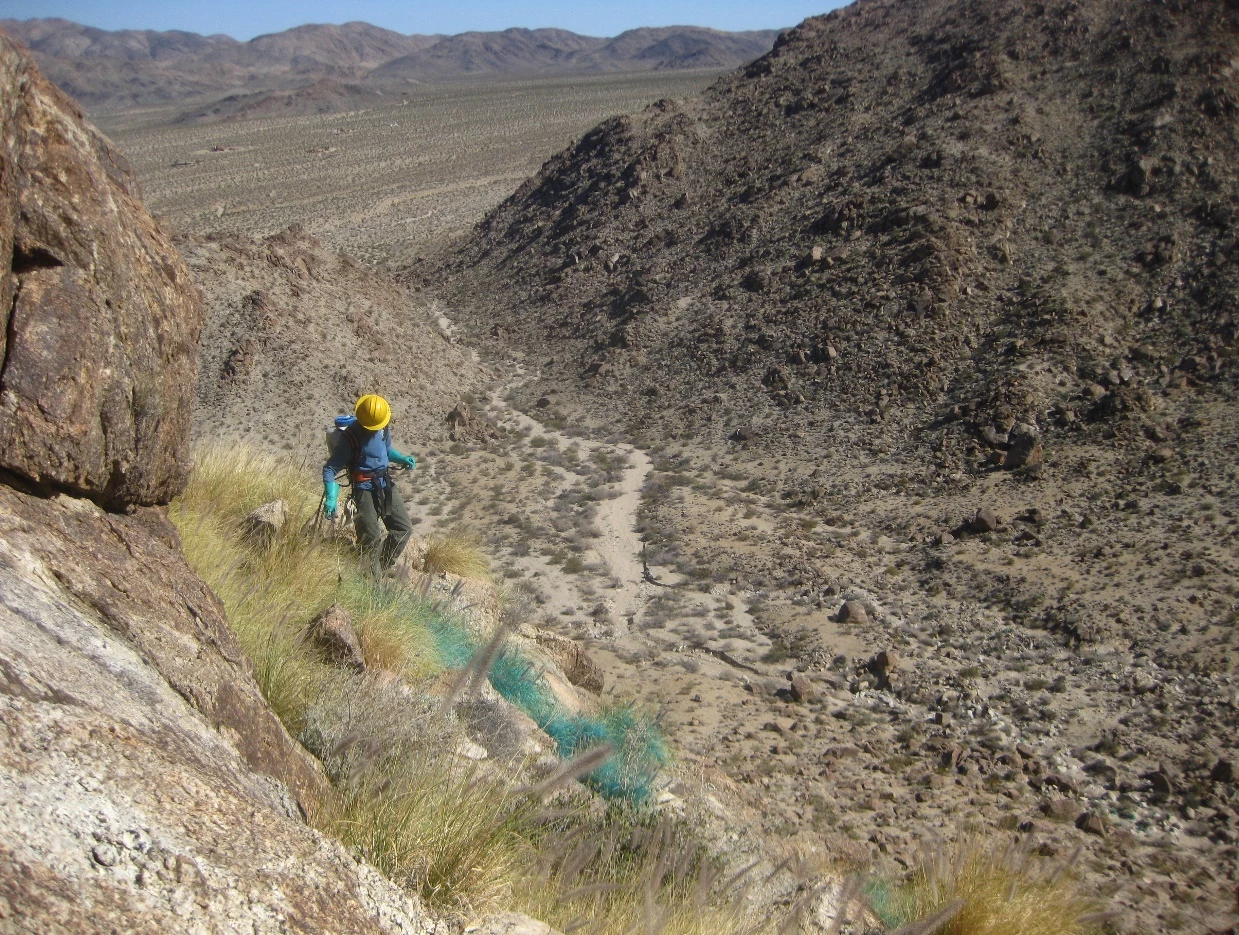Last updated: March 3, 2022
Article
How Lake Mead Stopped a Potent Invasive Plant Infestation

NPS Photo.
Fountaingrass (Pennisetum setaceum) is an invasive ornamental species planted in several areas of the Southwest. The wind spreads the seeds across a wide area, and new plants quickly crop up, even in remote areas. These plants are extremely flammable. Their presence increases hazardous fuels and wildfire risk in areas previously immune. When the staff at Lake Mead discovered the plant in two locations 10-12 miles upriver from the original source in landscaping, the Lake Mead Plant Management Team (IPMT) knew they had to hurry to prevent a dangerous fountaingrass infestation.

Photo by Judy Baxter.
Early Detection, Rapid Response
Early detection, cooperation, and aggressive control prevented a catastrophic infestation. The Lake Mead IPMT and Death Valley National Park staff worked together to treat and eradicate populations of fountaingrass within the park. Xantera staff, who manage the Furnace Creek Inn, helped get rid of fountaingrass plants from landscaping around the inn. Continued vigilance and quick action have removed the threat posed by fountaingrass from Death Valley National Park.
The Lake Mead IPMT cooperated with the US Fish and Wildlife Service, and infestations within Joshua Tree National Park and US Fish and Wildlife Refuges in the area are now under control.
All of this cooperation and quick action resulted in a landscape nearly free of a harmful invasive species. But this success doesn’t appear significant on the surface. There are no dramatic before and after photos to show what might have been. However, if the Lake Mead IPMT hadn’t acted, fountaingrass would have likely colonized large portions of the Colorado River system. It would be difficult if not impossible to control, and the ecology of the area would be substantially changed. Early detection and rapid response stopped an infestation before it started and saved substantial time and money while preserving our public lands.
